



Fidchell! The ancient Druid's game of wood wisdom. There are not many resources on this game, but a few truths are clear. Fidchell is a Celtic, pre-Christian board game mentioned in several Irish mythic texts. The board is a microcosm of the Druidic worldview. I think there is some very deep wisdom reflected in this game, similar to the complexity and philosophy of Go.
The game of Fidchell described on this page is a game recreated by Nigel Suckling, to whom I owe an enormous debt. His careful scrutiny of the scant sources and attention to the details of Druidic philosophy has given us a wonderfully fun and informative game which is quick to learn and hard to master.

The board is a lovely radial shape, seven concentric circles with lines criss-crossing towards the center. Each player has 27 pieces. The white pieces are the force of Life - growing outwards towards the edge. The Life player wins if they connect a string of pieces from the center to the edge.
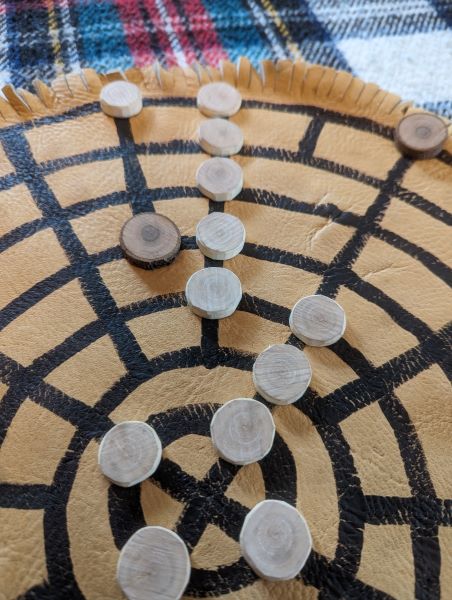
The other player is the embodiment of Death. This player wins if the Life player is reduced to six pieces, and is therefore unable to complete their path from the center to the edge. It is a much slower victory - the Death player has a harder game to play.
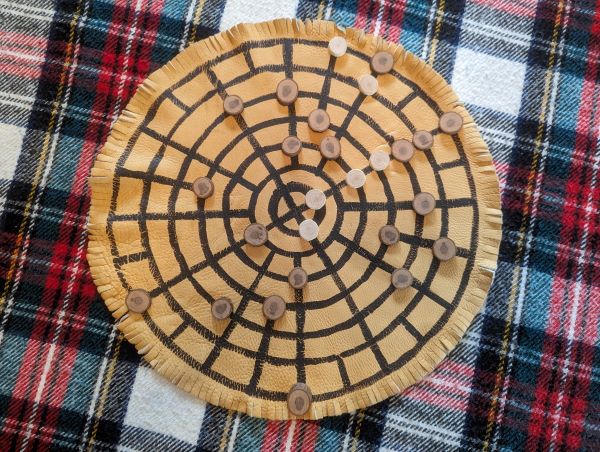
The board setup is always the same. Eight Life and eight Death pieces are placed around the board as seen here:
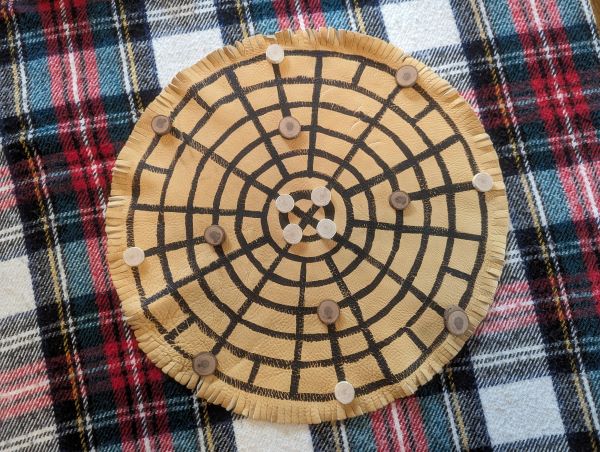
Play is divided into two Phases. Phase I is about placing pieces, and Phase II is about moving pieces. The Life player goes first. Players can place pieces at any crossing on the board.
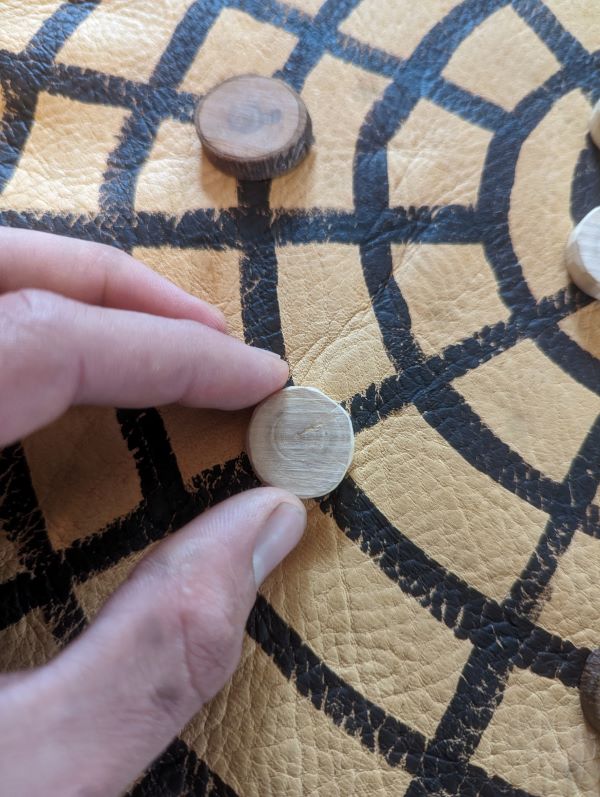
Pieces are captured if they are flanked by two opposing pieces. If you capture a piece, you get another turn! A chain of captures can dramatically change the board, so place your pieces carefully!
An important note is that you can place pieces into a flanked position, and they are safe.
Phase II begins when a player runs out of pieces. At this point, instead of placing a piece, your turn consists of moving one piece along any line. You can move as far as possible until you run into another piece. Just like in Phase I, if you capture a piece, you get another turn!
Very important note: when Phase II begins, the center of the board becomes HOSTILE! That means pieces can be captured against the center! I highly recommend finding an interesting-looking rock or cool shell to put in the center of your board to remind you of this important fact. As you can see, I myself have not found quite the right piece yet.
It is often the case that one player will enter Phase II while the other player is still in Phase I. Any player with pieces is still in Phase I, and any player without pieces left to place is in Phase II. This can lead to a very strange and dynamic transitional period where one player is placing pieces and the other player is moving them!
Something interesting I've noticed is that each quarter of the board has exactly 27 intersections, so if you don't want to count your pieces, you can line them up like this to make sure none of them have fallen off the table and rolled under the couch.
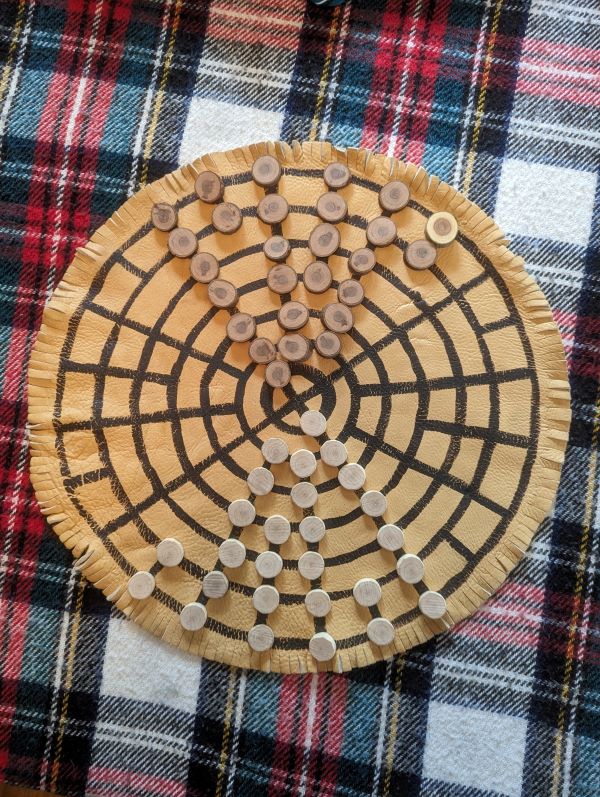
I wrote a few pages about Fidchell in our Gnostic Technology Zine #1, which I've copied here if you'd like to read them. The whole zine is a wonderful 100 pages (!) and I do recommend you read the whole thing!
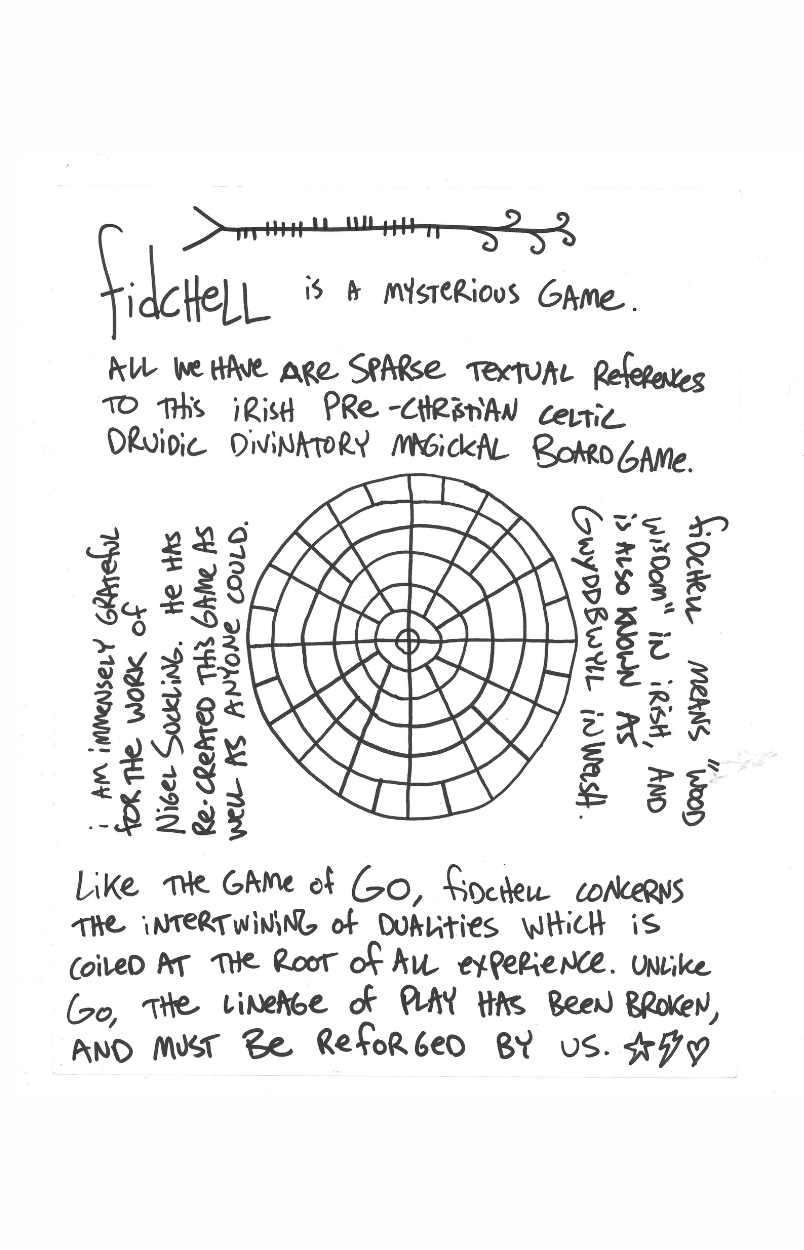
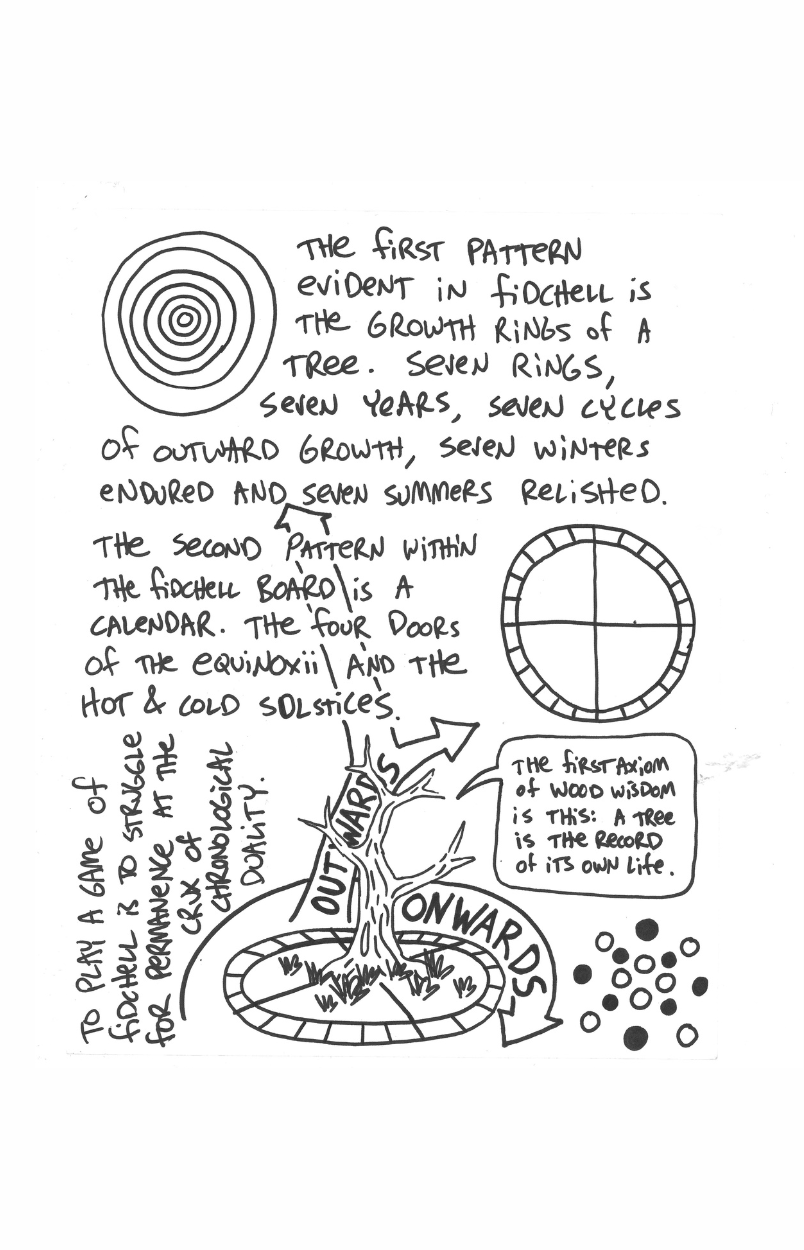
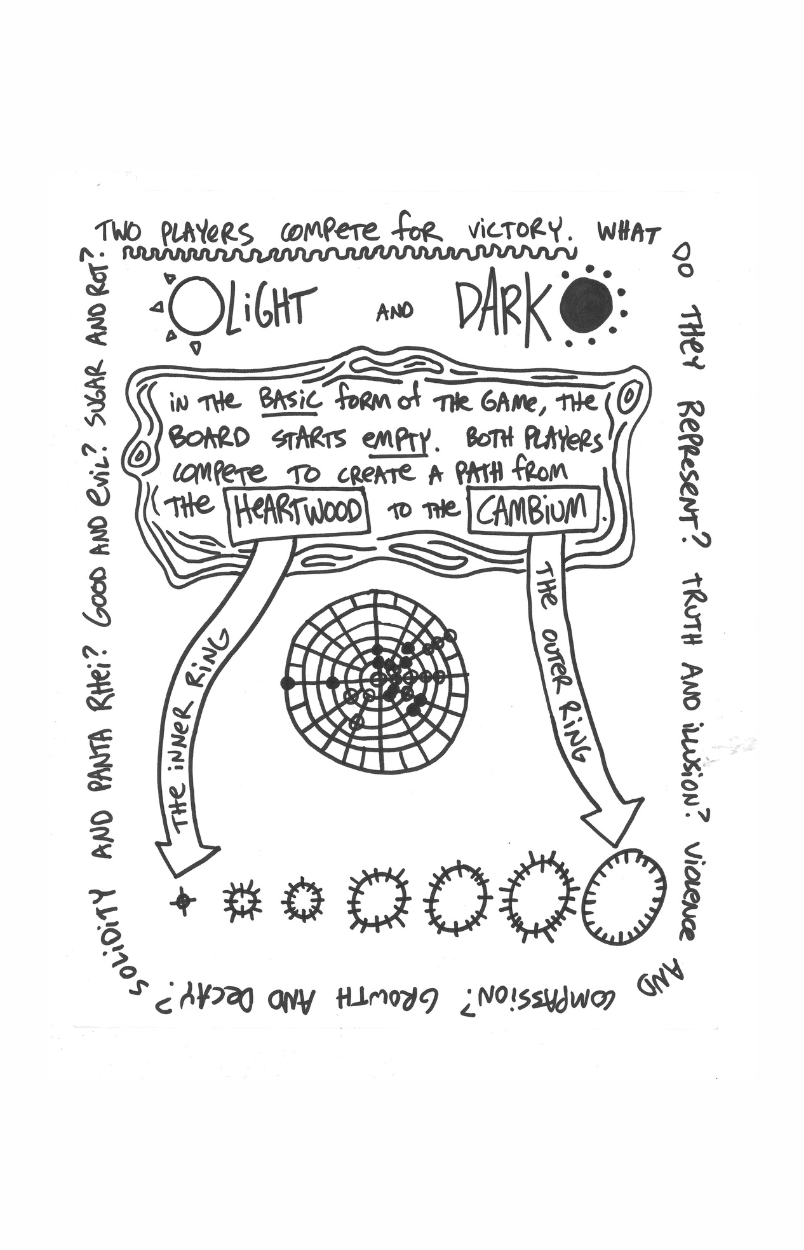
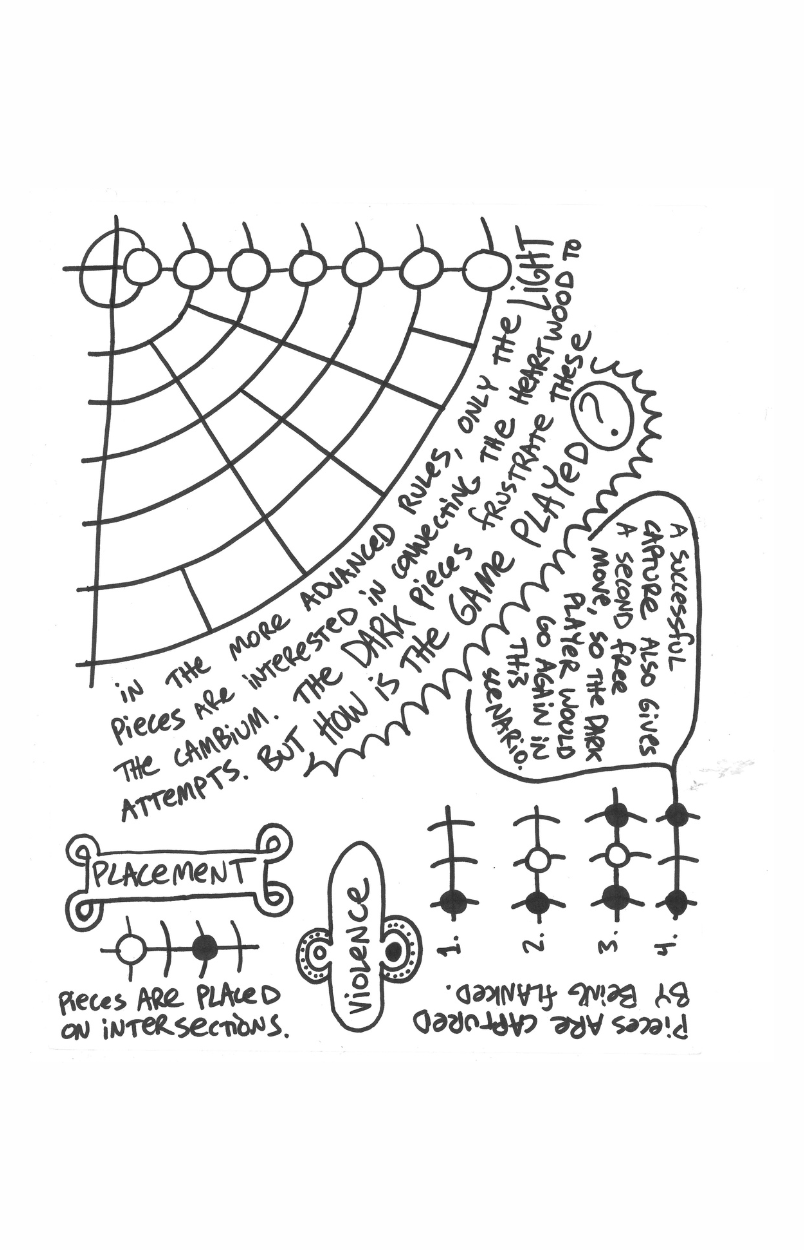
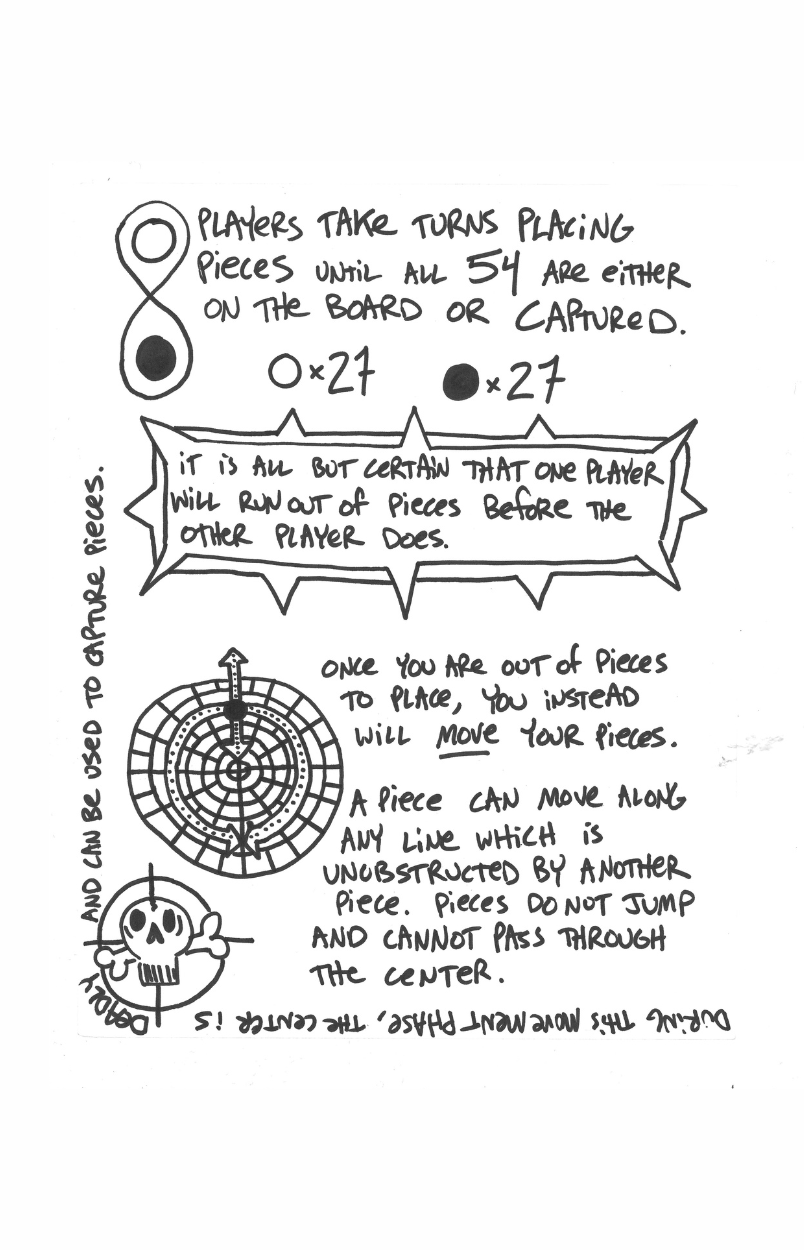
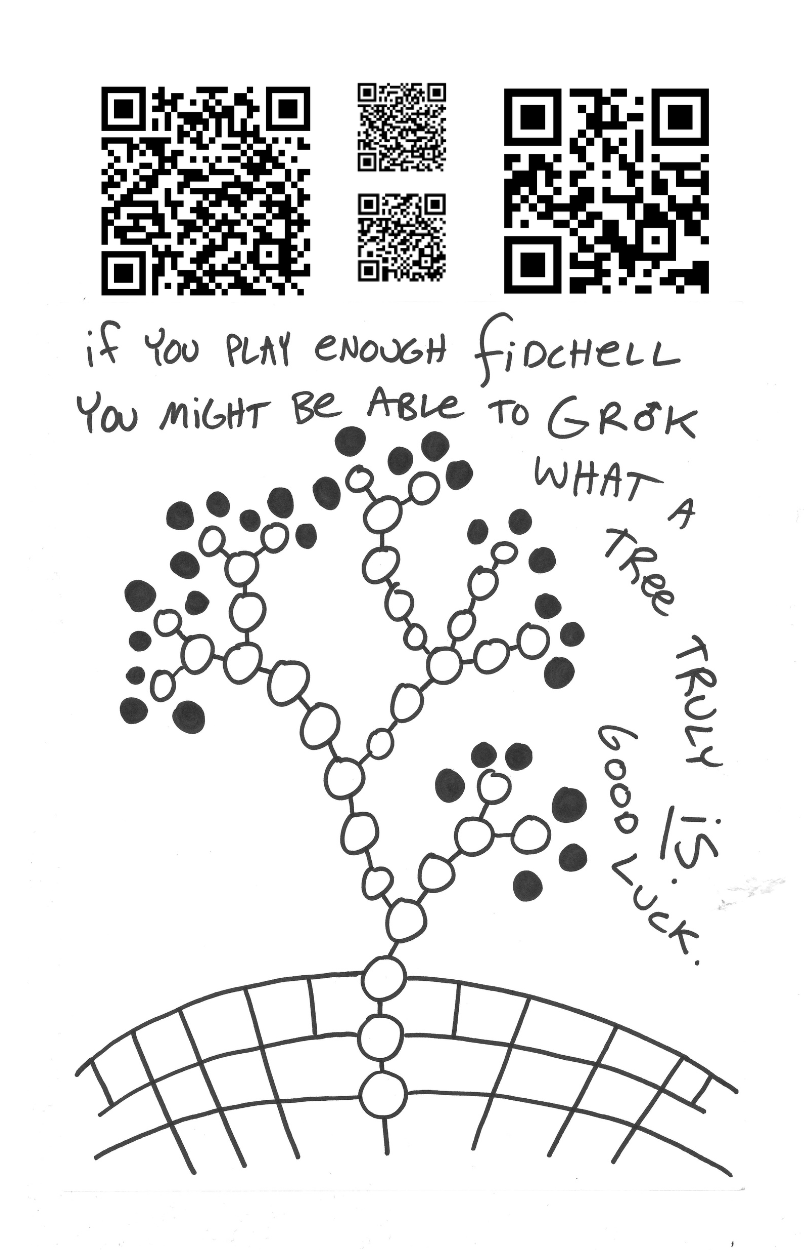
If you don't have a board and you'd like to play, there is an Android app and an iOS app for the game!
I've also whipped up a printable board and an SVG file for a laser cutter if you are so inclined. Have fun!